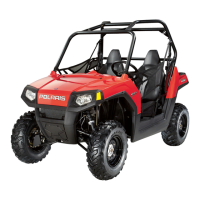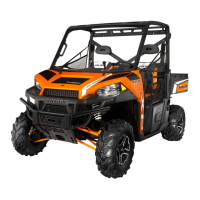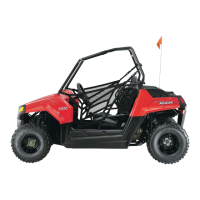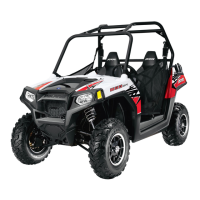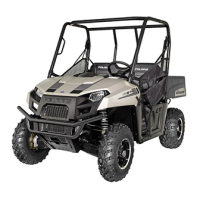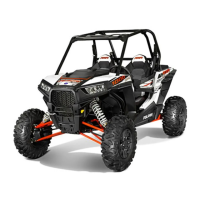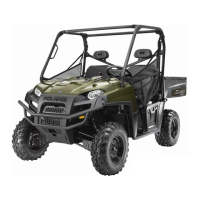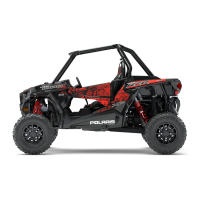6 - 3 WHEELS & TIRES
TIRES
DESCRIPTION
Tires are designed and engineered for each
specific vehicle. They provide the best overall
performance for normal operation. The ride and
handling characteristics match the vehicle's
requirements. With proper care they will give
excellent reliability, traction, skid resistance, and
tread life.
Driving habits have more effect on tire life than any
other factor. Careful drivers will obtain in most
cases, much greater mileage than severe use or
careless drivers. A few of the driving habits, which
will shorten the life of any tire, are:
• Rapid acceleration
• Severe brake applications
• Excessive speeds on turns
• Striking curbs and other obstacles
Radial-ply tires are more prone to irregular tread
wear. It is important to follow the tire rotation
interval. This will help to achieve a greater tread
life.
RADIAL-PLY TIRES
DESCRIPTION
Radial-ply tires improve handling, tread life and ride
quality, and decrease rolling resistance.
Radial-ply tires must always be used in sets of four.
Radial-ply tires have the same load-carrying
capacity as other types of tires of the same size.
They also use the same recommended inflation
pressures.
The use of oversized tires, either in the front or rear
of the vehicle, can cause vehicle drive train failure.
The use of tires from different manufacturers on the
same vehicle is not recommended. The proper tire
pressure should be maintained on all four tires.
TIRE INFLATION
PRESSURES
Proper tire inflation pressure is essential to the safe
and satisfactory operation of the vehicle. Under
inflation will cause rapid shoulder wear, tire flexing,
and possible tire failure.
Over inflation will cause rapid center wear and loss
of the tire's ability to cushion shocks.
Both under and over inflation affect the stability of
the vehicle and can produce a feeling of sluggish
response or over-responsiveness.
Unequal tire pressures can cause steering
problems, resulting in loss of control of the vehicle.
For proper tire pressure specification, refer to the
VIN/Certification Label at the left rear of the roof
panel. The label also lists proper wheel and tire
size for the vehicle. (See VIN/Certification Label in
Introduction section.)
Tire pressures have been chosen to provide safe
operation, vehicle stability, and a smooth ride. Tire
pressure should be checked cold once a month.
Tire pressure decreases as the ambient
temperature drops. Checks tire pressure frequently
when ambient temperature varies widely.
Specified tire inflation pressures are cold inflation
pressures. The vehicle must sit for at least 3 hours
to obtain the correct cold inflation pressure reading,
or be driven less than one mile after sitting for 3
hours. Tire inflation pressures may increase from 2
to 6 pounds per square inch (psi) during operation.
Do not reduce this normal pressure build-up.
WARNING: OVER OR UNDER INFLATED TIRES
CAN AFFECT VEHICLE HANDLING AND TREAD
WEAR. THIS MAY CAUSE THE TIRE TO FAIL
SUDDENLY, RESULTING IN LOSS OF VEHICLE
CONTROL.
November 2007 GEM Service Manual

